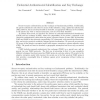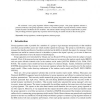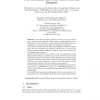26 search results - page 3 / 6 » Securing group key exchange against strong corruptions |
CTRSA
2008
Springer
13 years 7 months ago
2008
Springer
Public key based authentication and key exchange protocols are not usually designed with privacy in mind and thus involve cleartext exchanges of identities and certificates before ...
CRYPTO
2010
Springer
13 years 6 months ago
2010
Springer
Secure two-party authentication and key exchange are fundamental problems. Traditionally, the parties authenticate each other by means of their identities, using a public-key infr...
ASIACRYPT
2007
Springer
13 years 11 months ago
2007
Springer
We construct a new group signature scheme using bilinear groups. The group signature scheme is practical, both keys and group signatures consist of a constant number of group elem...
WIMOB
2008
IEEE
13 years 11 months ago
2008
IEEE
Abstract—Most contemporary security mechanisms and protocols include exchange of random or time-variant nonces as an essential means of protection against replay and other threat...
CHES
2006
Springer
13 years 9 months ago
2006
Springer
It is well known that a malicious adversary can try to retrieve secret information by inducing a fault during cryptographic operations. Following the work of Seifert on fault induc...



